Everything you need to know about specifications and performance - Peugeot 308 2010 - 1.6 HDi (112 Hp)
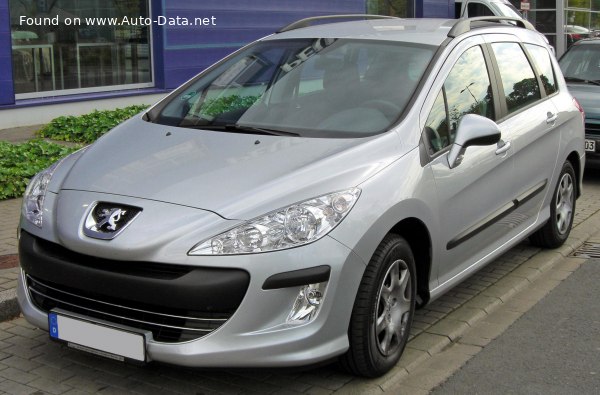
Overview:
What is the engine capacity of a Peugeot 308 2010?
The engine capacity of the Peugeot 308 2010 is 1560.
Peugeot 308 2010 How many horsepower?
The engine power of the Peugeot 308 2010 is 112 Hp @ 3600 rpm..
What is the Peugeot 308 2010 engine?
Peugeot 308 2010 engine is 9HR DV6C. (Click to see other cars using the same engine)
How much gasoline does a Peugeot 308 2010 consume?
The Peugeot 308 2010 consumes 4.8-5.4 liters of gasoline per 100 km
General:
Brand: Peugeot
Model: 308
Generation: 308 SW I (Phase I, 2008)
Modification (Engine): 1.6 HDi (112 Hp)
Start of production: 2010
End of production: 2011
Powertrain Architecture: Internal Combustion Engine
Body type:Station wagon
Seats: 5-7
Doors: 5
Engine:
Engine systems: Particulate filter
Power: 112 hp @ 3600 rpm.
Power per litre: 71.8 hp/l
Torque: 270 nm @ 1750 rpm.
Engine Model/Code:9HR DV6C
Engine displacement: 1560
Number of cylinders: 4
Engine configuration: Inline
Number of valves per cylinder: 2
Fuel injection system: Diesel Commonrail
Engine aspiration: Turbocharger, Intercooler
Valvetrain: SOHC
Engine oil capacity: 3.75 l
Coolant: 6 l
Engine layout: Front, Transverse
Cylinder Bore: 75 mm
Piston Stroke: 88.3 mm
Compression ratio: 18:1
Performance:
Fuel Type: Diesel
Fuel consumption (economy) - urban: 6.1-6.7 l/100 km
Fuel consumption (economy) - extra urban: 4-4.7 l/100 km
Fuel consumption (economy) - combined (NEDC): 4.8-5.4 l/100 km
Fuel consumption (economy) - urban (NEDC): 6.1-6.7 l/100 km
Fuel consumption (economy) - extra urban (NEDC): 4-4.7 l/100 km
Fuel consumption (economy) - combined: 4.8-5.4 l/100 km
Emission standard: Euro 5
Acceleration 0 - 100 km/h: 11.9 sec
Acceleration 0 - 62 mph: 11.9 sec
Maximum speed: 187 km/h
Weight-to-power ratio: 12.6 kg/Hp, 79.4 Hp/tonne
Weight-to-torque ratio: 5.2 kg/Nm, 191.5 Nm/tonne
Acceleration 0 - 60 mph: 11.3 sec
Space:
Kerb Weight (kg): 1410-1526
Max. weight (kg): 1970-2150
Max. roof load: 75 kg
Max load (kg): 560-624
Trunk (boot) space - maximum: 1736 l
Trunk (boot) space - minimum: 570 l
Permitted trailer load with brakes (12%): 1400 kg
Fuel tank capacity: 60 l
Permitted trailer load without brakes: 740 kg
Permitted towbar download: 60 kg
dimensions:
Length: 4500 mm
Width: 1815 mm
Height: 1564 mm
wheelbase: 2708 mm
Width including mirrors: 2038 mm
Front track: 1526-1536 mm
Rear (Back) track: 1521-1531 mm
Front overhang: 926 mm
Rear overhang: 866 mm
Minimum turning circle (turning diameter): 10.7 m
Powertrain, Suspension and Brakes:
Drivetrain Architecture: The Internal combustion Engine (ICE) drives the front wheels of the vehicle.
Drive wheel: Front wheel drive
Number of gears and type of gearbox: 6 gears, manual transmission
Front brakes: Ventilated discs
Rear brakes: Disc
Assisting systems: ABS (Anti-lock braking system)
Steering type: Steering rack and pinion
Power steering: Electric Steering
Tires size: 195/65 R15; 205/55 R16; 225/45 R17; 225/40 R18
Wheel rims size: 6.5J x 15; 7J x 16; 7.5J x 17; 8J x 18
Front suspension: Independent, type McPherson with coil Spring and anti-roll bar
Rear suspension: Coil spring, Torsion
See also
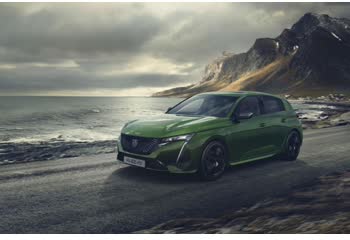
Last generation.
Its production began in 2023 until 2025
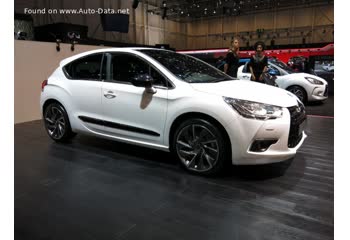
Same engine. (9HR DV6C).
Its production began in 2011 until 2012
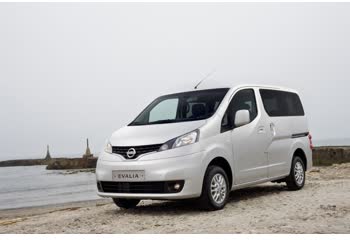
Same production year and almost the same engine capacity.
Its production began in 2010 until 2019
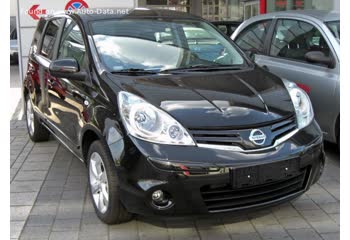
Same production year and almost the same engine capacity.
Its production began in 2010 until 2012

Write a comment